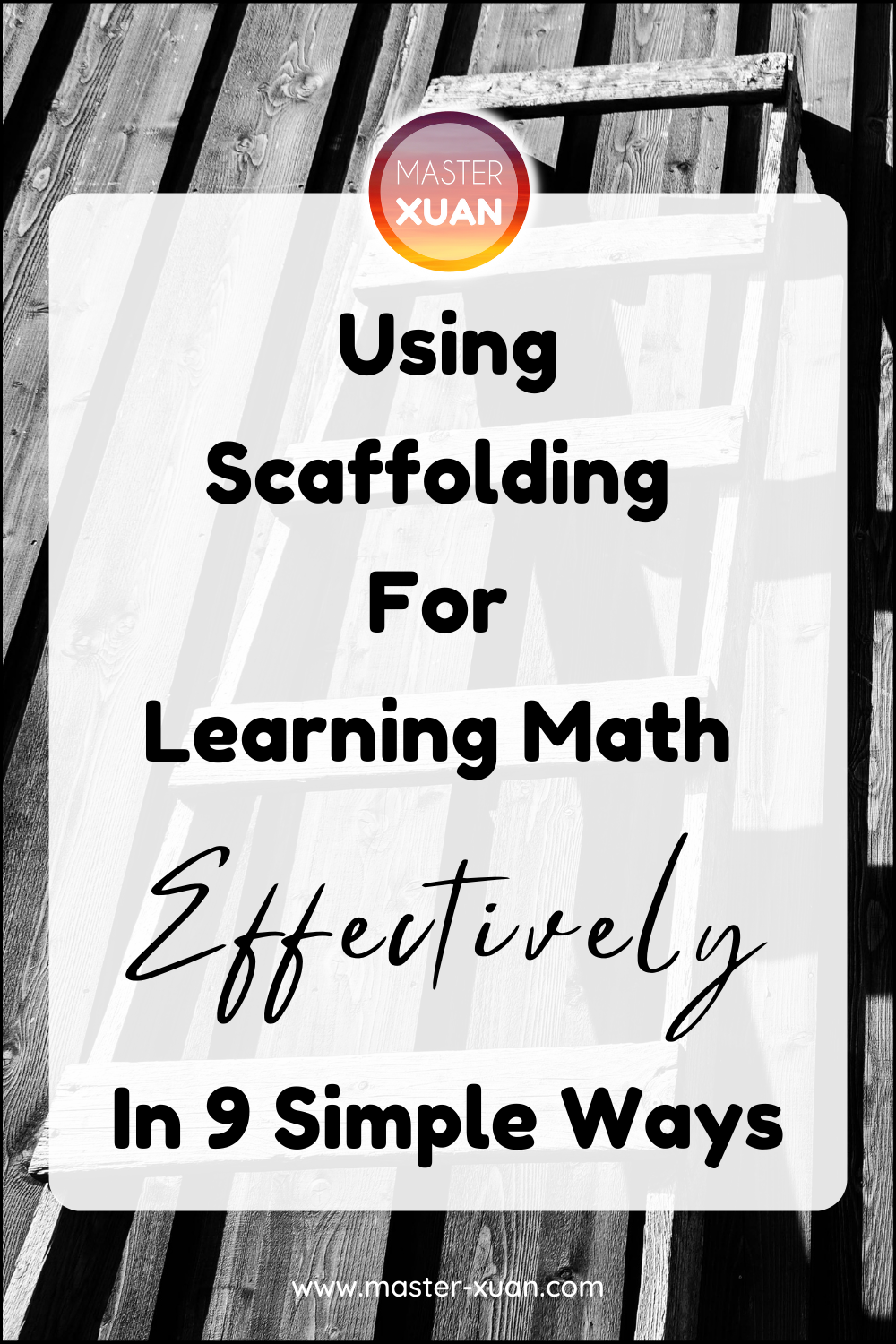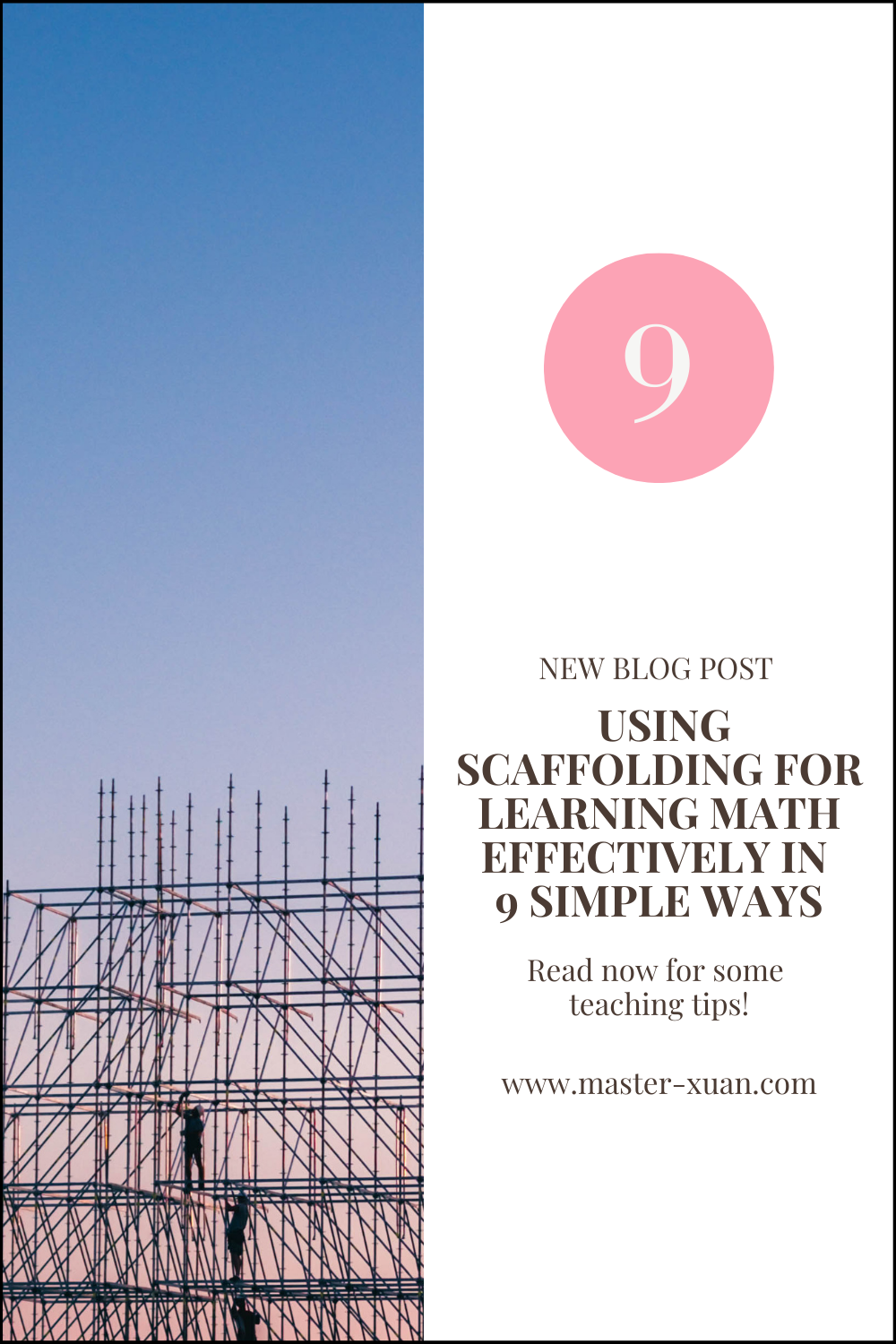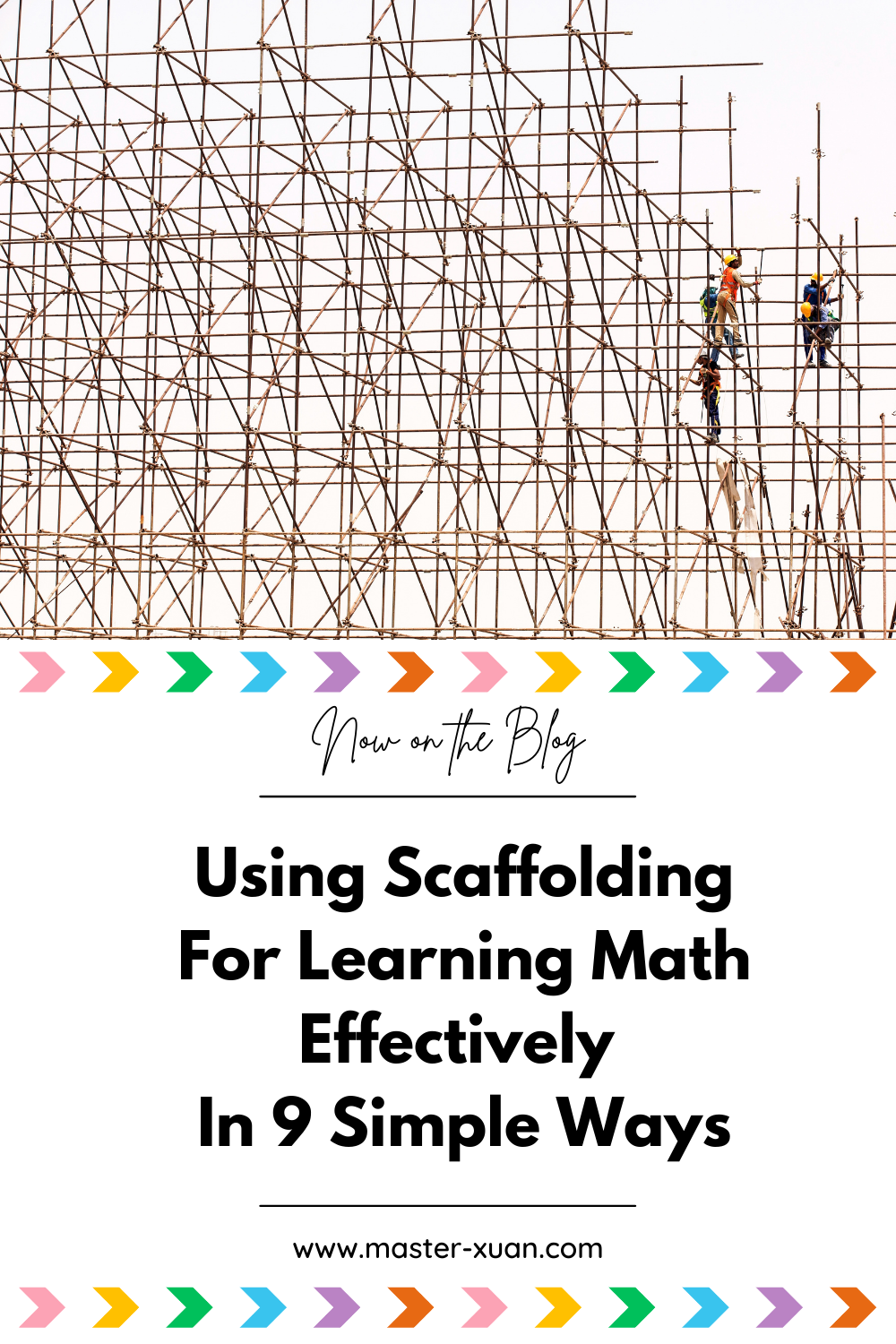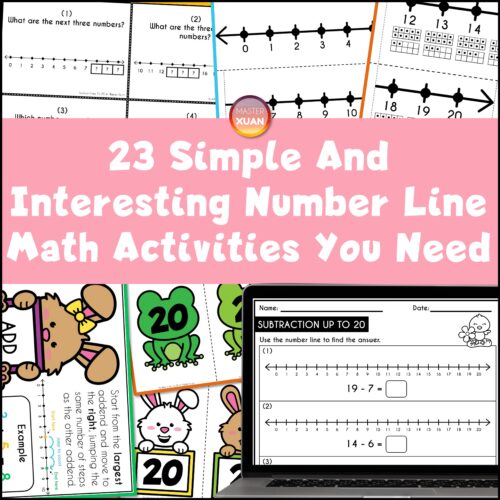Students need scaffolding for learning so that the experience is less stressful and effective.
Is the word scaffolding sound unfamiliar to you?
Not sure about the benefits of scaffolding?
Want to learn more scaffold teaching strategies?
This blog post is for you! Read on to learn more about scaffolding math lessons.
What is scaffolding in education?
In plain speaking, scaffolding means providing temporary support to help students reach a higher level of understanding and acquire skills. This support will slowly be removed and students will gradually take over more responsibility for their learning process. Basically, teachers’ guidance will reduce as students’ competence increases.
For example, imagine teaching a child to walk.


We train the child in many ways, giving our full support before the child even takes the first step.
We hold the child’s hands to provide support. Then, when the time is right, we let go of our hands and let the child walks alone.
During the whole process, there are many milestones along the way.
We need to assess the child’s progress to determine the amount of support we provided.
We need to be patient and resist rushing the process.
As the child becomes skillful, we take back our support.
I hope this metaphor gives you a better idea of what is it like scaffolding for learning.
What are the benefits of scaffolding for learning?
There are many benefits, but I will mention only 2 in this article.
Firstly, scaffold learning provides emotional support. By providing a supportive learning environment, it helps to reduce the negative emotions that students may experience when facing a difficult task without assistance.
When students are constantly in a negative environment, they will be less motivated to learn.
On the other hand, students will be more daring and willing to venture into a new terrain of learning with teachers “holding their hands” and “showing them the path”.


Secondly, scaffold learning increases the likelihood for students to understand math concepts and do better academically.
So now you understand what is scaffolding and how important it is, it is time to know how to implement them in your math lesson.
By the way, if you want more teaching strategies, do check out this blog post: The Top 3 Strategies For Teaching Math In Small Groups Or Classes
1) Break large tasks into smaller tasks
To make learning goals or content more manageable, break it into smaller sections.
Know what do you want to achieve and the duration you have to achieve them.
For example, Fractions is a big topic. There are many components in it that students need to master.
So let’s break it into smaller concepts for scaffolding for learning:
- equivalent fractions,
- adding and subtracting like fractions,
- word problems involving adding and subtracting like fractions
- adding and subtracting unlike fractions,
- word problems involving adding and subtracting unlike fractions,
- converting mixed numbers to improper and vice versa,
- adding and subtracting mixed fractions,
- word problems involving mixed fractions,
- fractions of a set,
- multiplying fractions,
- word problems involving multiplying of fractions,
- understanding fractions as division,
- dividing fractions
- Word problems involving fractions
2) Scaffolding questions for math by starting with simpler questions first
Solving simpler versions of the problem reveals the pattern needed to efficiently solve the more complex versions of the problem.
For example, students need to comprehend that multiplication is actually repeated addition.
That is why we teach addition first before teaching multiplication.
Using scaffolded problems allows students to learn underlying concepts that they can apply to more difficult problems, which makes solving them and learning more efficient.
3) Link with prior knowledge
Have a discussion with your students about what do they know about the topic. Start the discussion with “last year, we learned…” or “last lesson, we learn how to…”
Or, instead of leading the conversation, let your students verbalize what they know about the topic.
Starting a new topic with knowledge that students are familiar with helps them to recall and make connections.
Do note that prior knowledge doesn’t have to be all about math. It could also refer to the child’s life experiences.
For instance, before teaching percentage, you can ask them where did they see the sign before and what do they understand about it.
By making it relatable and connecting to their lives, students are more engaged in learning.
In addition, by linking with previous math skills that they learn, it also reinforces the math skills they learned previously.
If needed, you may want to assess your students’ prior knowledge with a pre-test so that you can arrange for differentiated work.
Alternatively, assess your students through games and activities. Make them do a lower grade standard activity to revise and review their math skills.
4) Demonstrate or Model for scaffolding math problems
When teaching a new concept, show them how did you tackle the question from the moment you read the question to the end. Remember to think out loud, so that students will know your thinking process.
If you planned for math projects, shows students some concrete examples.
If you want to play a new game or activity, show them how it works by demonstrating the whole process.
By showing the process and end product, students will have a clearer idea of what is expected from them and what it looks like.
You can use the I do, we do, you do teaching model in your lesson. For more details and strategies, do grab the free ebook.
5) Make expectations clear
Like all goals and directions, clarity and being specific are very important.
If there is a specific way you like your students to proceed with Math Talks, model it.
If there is a specific way you like your students to present their workings, show it.
This is like establishing a routine. You will need to show and let your students practice it.
If you have a certain way you will like your students to follow, write, and/or show them. It can be in the form of a to-do list or step-by-step instructions.
For instance, we have all sorts of strategies to tackle math word problems. If you want students to use the CUBES method, let them know what is it. Paste the anchor chart in the front of the class to remind them. That is one way of scaffolding math word problems.
When students have a clear idea of how to proceed, they will be able to proceed with more confidence.
6) Scaffold learning by incorporating visual aids and manipulatives
Elementary students learn well with manipulatives and visuals (i.e. number lines, arrays, ten frames, anchor charts).
Students can use models drawing or tape diagrams to help understand word problems.
When needed, you can also use pictures to introduce students to a new concept.
For example, I use images to introduce students to how to solve equations via substitution.
Read more in this blog post: 3 Useful Resources Students Need To Learn How To Solve Equations Simultaneously.
7) Teach the same concept in multiple ways
Teaching a new concept in various ways not only adds interest to your lesson but can also help different types of learners to learn.
For students who already have a better understanding, a different method of learning can help to reinforce the newly taught math skill without them feeling bored.
Here are some ways you can teach differently: mini-lessons, act it out, show a video, peer teaching/discussion, activities, and games.
For example, students can practice fractions questions…
…play scavenger hunt…
…participate in fractions quiz game show …
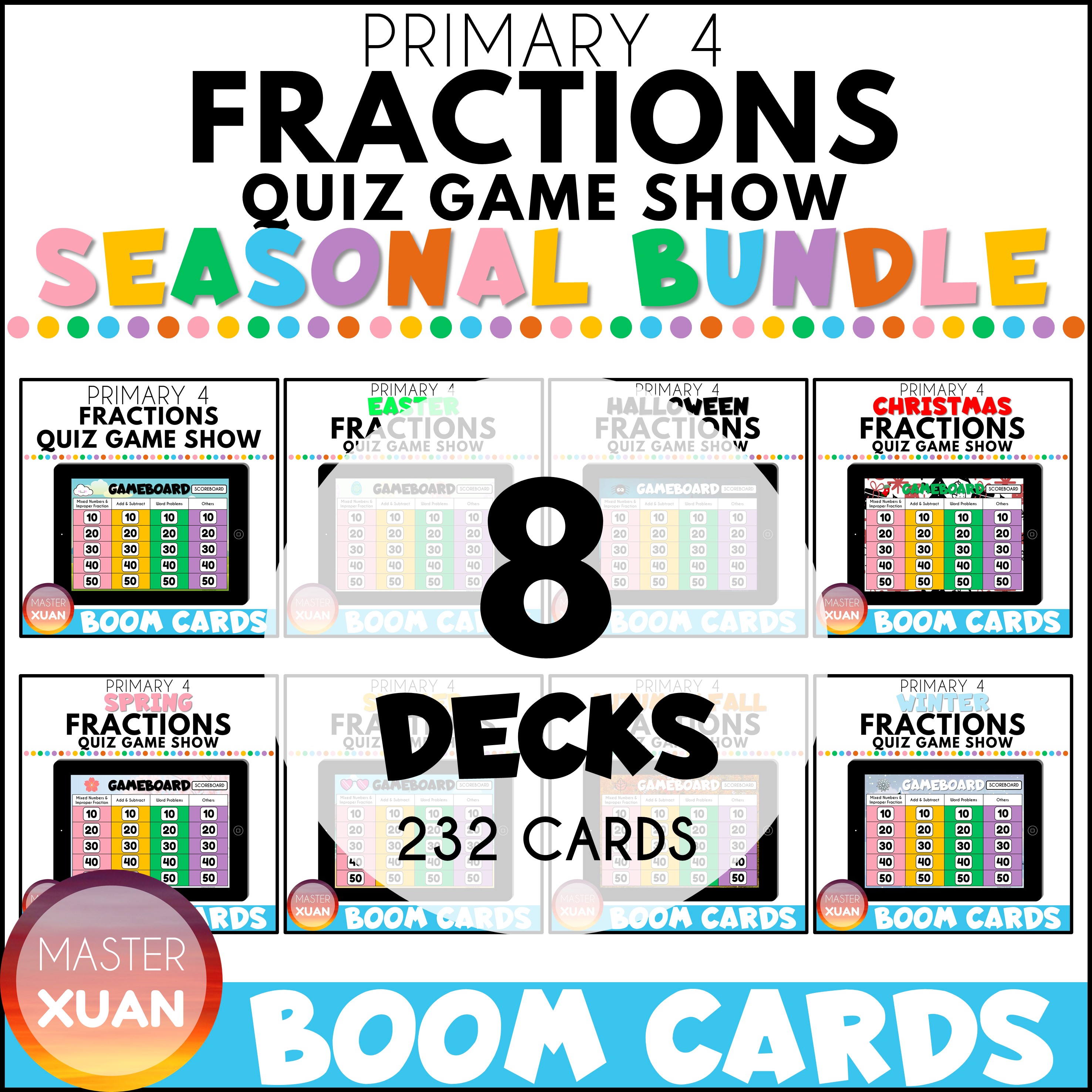

…and finally, complete a small quiz to get assessed.
8) Slow down
Sometimes we tend to rush through the steps or concepts that we think are easy. However, as we face students of different learning paces and standards, it may be wise to slow down our pace.
Remind yourself that if students didn’t comprehend what we are teaching, it will be a waste of breath to continue. The point here is for students to learn, not for us to tick off the concepts taught.
In addition, be conscious to take a deep breath and decrease the speaking rate. If you have a habit of talking too fast, consider creating a secret hand signal for students to remind you when you are going too fast for them.
Furthermore, for more complex questions, your pace should be slower than usual so that students have plenty of time to digest and comprehend what you are teaching.
9) Give students time to practice
Students will have a clearer idea of the concepts when they practice instead of just listening.
Instead of letting them practice after teaching 3 concepts in a row, let them practice a new concept right after you taught them.
So it will be: Teach a new concept – practice – teach a new concept – practice – teach a new concept – practice.
Constant checking in on students will give us a better idea of how well the weaker students are doing in class.
Do note that asking students whether do they understand or not may not give you the truth.
Ask questions that will reveal understanding or make them do similar questions may be more useful.
Conclusion
Here are the 9 strategies for scaffolding for learning:
1) Break large tasks into smaller tasks
2) Start with simpler questions first
3) Link with prior knowledge
4) Demonstrate or Model
5) Make expectations clear
6) Scaffold learning by incorporating visual aids and manipulatives
7) Teach the same concept in multiple ways
8) Slow down
9) Give students time to practice
Do you have any scaffold teaching strategies you would like to share with other teachers? Let me know by dropping an email to me.
Here are some pins that you can save to bookmark this post: Using Scaffolding For Learning Math Effectively In 9 Simple Ways. Save them to your Pinterest Board now! ↓
